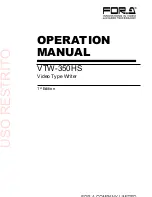
20
4.7
Refrigerant
Leakage
Precautions
R410A
refrigerant
is
not
flammable
in
air
at
temperatures
up
to
100°C
at
atmospheric
pressure
and
is
generally
considered
a
safe
substance
to
use
in
air
conditioning
systems.
Nevertheless,
precautions
should
be
taken
to
avoid
danger
to
life
in
the
unlikely
event
of
a
major
refrigerant
leakage.
Precautions
should
be
taken
in
accordance
with
all
applicable
legislation.
Where
no
applicable
legislation
exists,
the
following
may
be
used
as
a
guide:
Air
conditioned
rooms
should
be
large
enough
that
if
leakage
of
all
the
refrigerant
in
the
system
occurs,
the
concentration
of
the
refrigerant
in
the
room
does
not
reach
a
level
dangerous
to
health.
A
critical
concentration
(at
which
point
R410A
becomes
dangerous
to
human
health)
of
0.3
kg/m
3
can
be
used.
The
potential
concentration
of
refrigerant
in
a
room
following
a
leak
can
be
calculated
as
follows:
Calculate
the
total
amount
in
of
refrigerant
in
the
system
(“A”)
as
the
nameplate
charge
(the
charge
in
the
system
when
delivered
from
the
factory)
plus
the
additional
charge
added
as
per
Installation
Manual,
8.1
“Calculating
Additional
Refrigerant
Charge”.
Calculate
the
total
volume
(“B”)
of
the
smallest
room
into
which
refrigerant
could
potentially
leak.
Calculate
the
potential
refrigerant
concentration
as
A
divided
by
B.
If
A/B
is
not
less
than
0.3
kg/m
3
,
countermeasures
such
installing
mechanical
ventilators
(either
ventilating
regularly
or
controlled
by
refrigerant
leakage
detectors)
should
be
taken.
Since
R410A
is
heavier
than
air,
particular
consideration
should
be
given
to
leak
scenarios
in
basement
rooms.
Figure
3
‐
4.6:
Potential
refrigerant
leak
scenario
Figure
3
‐
4.7:
Mechanical
ventilator
controlled
by
refrigerant
leak
detector
Outdoor unit
Indoor unit
Room full of leaking refrigerant
(All the refrigerant has leaked)
Leakage
detector
connected
to
mechanical
ventilator
Outside
air
Indoor
unit
Air
vent















































